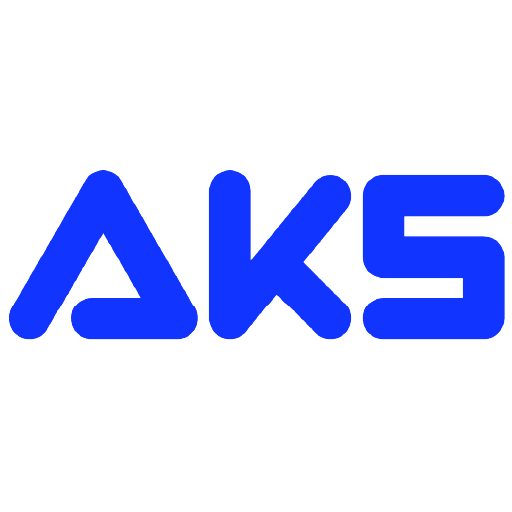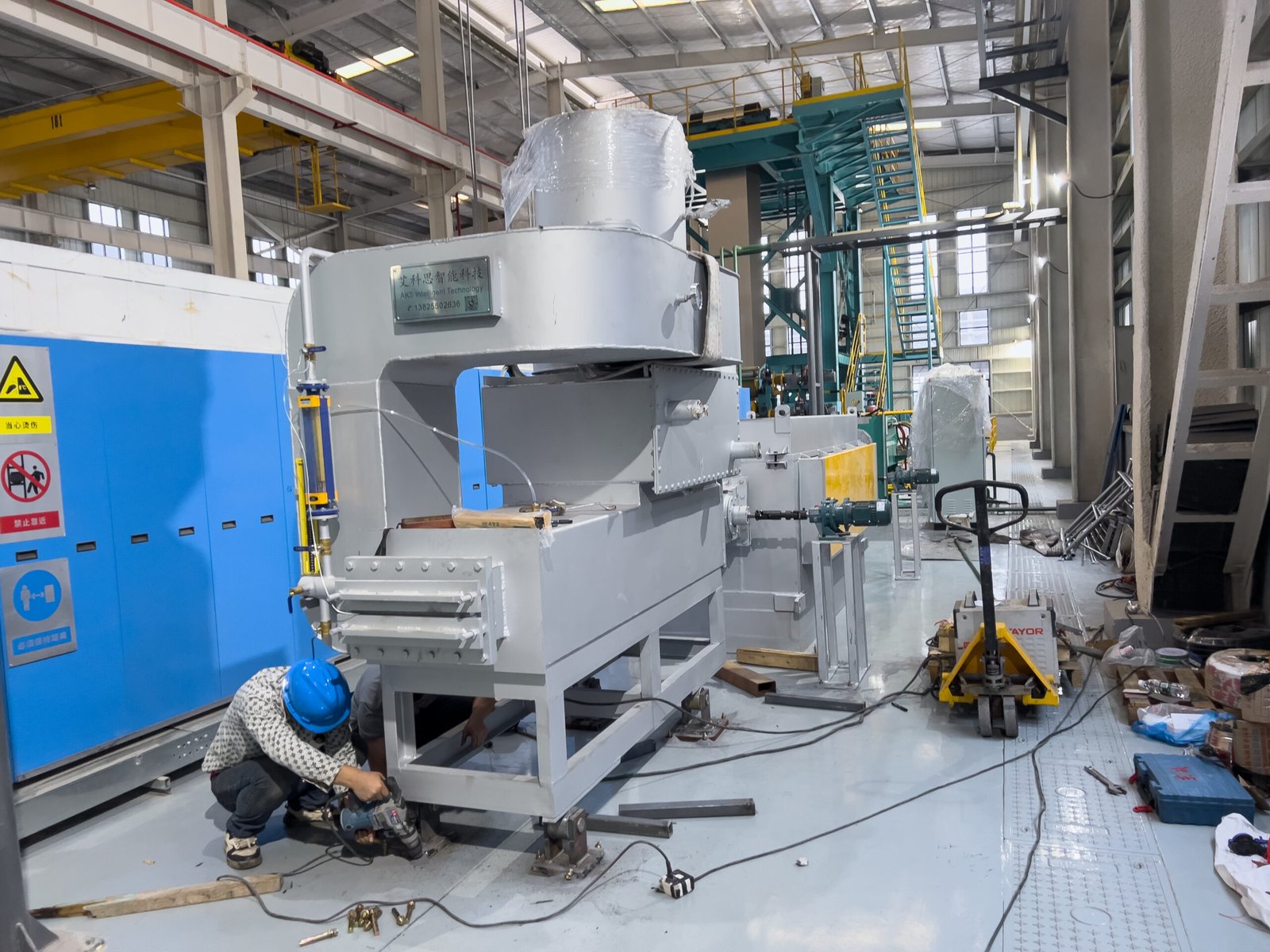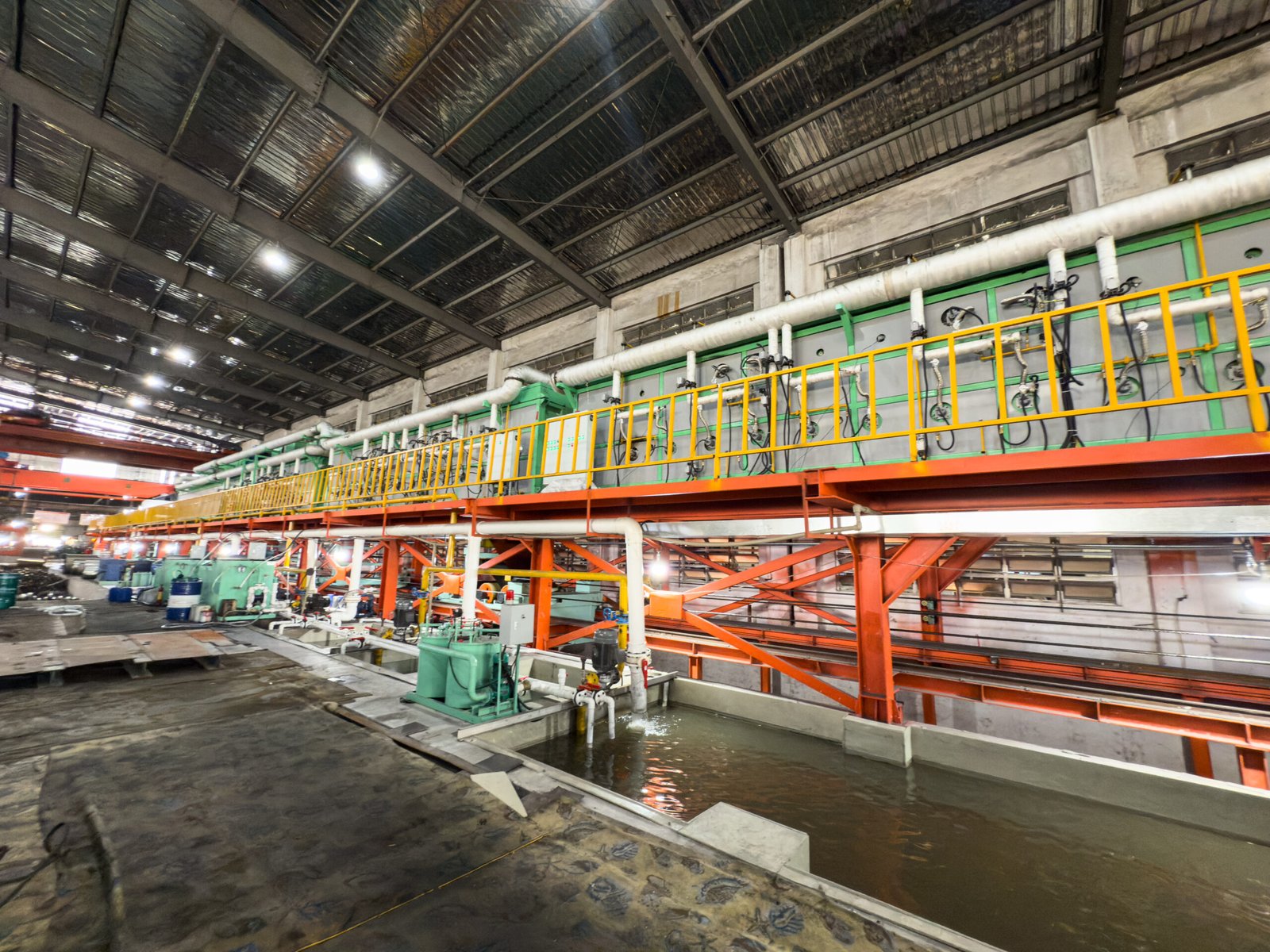What Are the Essential Parameters for Bright Annealing Stainless Steel?
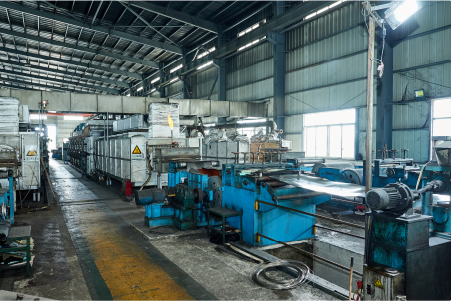
Are you struggling to achieve that perfect, mirror-like finish on your stainless steel products? It can be frustrating when oxidation and inconsistencies ruin your hard work, leading to costly rework and unhappy clients. The solution lies in mastering the fundamental parameters of the bright annealing process.
The essential parameters for bright annealing stainless steel are furnace temperature, holding time, the protective atmosphere's composition and purity (measured by dew point), and the cooling rate. Precise control and the synergistic balance of these four variables are critical to achieving a bright, non-oxidized, and mechanically sound final product.
Here at AKS, I’ve seen countless manufacturers transform their operations by moving from guesswork to a science-based approach. The difference is night and day. In this article, I’ll walk you through the critical variables we've helped clients master, turning their production challenges into a competitive advantage. Let's dive deeper into how you can achieve flawless results every time.
Understanding these parameters is more than an academic exercise; it's the core of efficient and high-quality production. It’s not about finding one secret setting, but rather about orchestrating a delicate balance between heat, time, atmosphere, and cooling. For instance, a major automotive parts producer we worked with was focused solely on hitting a specific temperature, neglecting the purity of their protective atmosphere. The result was a consistently cloudy finish that required expensive and time-consuming secondary buffing. By understanding the interplay of all parameters, they eliminated this waste. This guide will break down each element, providing the insights you need to refine your process, improve quality, and boost your bottom line.
Which factors are crucial for the bright annealing process of stainless steel?
Are you chasing a "magic number" for your annealing process, only to be met with inconsistent results? This approach often leads to frustration and defects, as quality hinges on more than a single setting. The key is to understand and control the combination of factors at play.
The four crucial factors for bright annealing are temperature, time, atmosphere, and cooling rate. Temperature enables recrystallization, time ensures the process completes, the atmosphere prevents oxidation, and the cooling rate secures the final microstructure and properties. Their precise interplay dictates the success of the process.
A holistic view is not just recommended; it's essential. I recall a client in Southeast Asia, a producer of high-grade stainless steel tubes for the medical industry, who struggled for months with intermittent surface blemishes. They meticulously controlled their furnace temperature but overlooked the fluctuations in their atmosphere's dew point. This small oversight was the root cause of oxidation, leading to a rejection rate of nearly 10%. By helping them install continuous monitoring for all four key parameters—temperature, time, atmosphere, and cooling—we gave them the complete picture. This shift in perspective allowed them to diagnose problems instantly and, more importantly, prevent them from occurring. Their story is a powerful testament to the fact that in bright annealing, every element matters. The following sections will break down each of these factors, drawing on real-world applications to demonstrate how their synergy creates a flawless, bright finish. You'll learn not just what they are, but why and how they work together, empowering you to take full control of your heat treatment process.
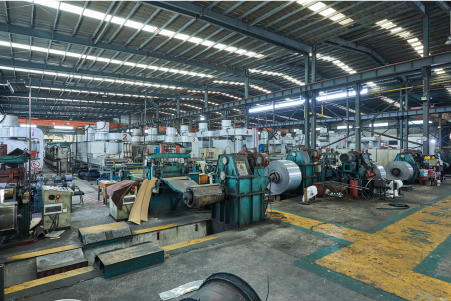
The success of any bright annealing operation rests on the precise management of its core pillars. Viewing these factors in isolation is a common but critical mistake. True mastery comes from understanding their dynamic interplay, where an adjustment in one parameter necessitates a calculated response in others. For example, increasing the furnace line speed to improve throughput (reducing time) may require a corresponding increase in temperature or a more aggressive cooling profile to achieve the same metallurgical result. This orchestration is where art meets science, and it's what separates standard production from world-class manufacturing. At AKS, our furnace designs1 are built around this philosophy, providing operators with the granular control needed to manage these sensitive interactions effectively. Our integrated systems, featuring advanced process logic controllers (PLCs), allow for the creation of precise "recipes" that lock in the optimal balance for each specific product and material grade, ensuring repeatability and quality.
The Foundation: Achieving and Maintaining Soaking Temperature
The primary role of temperature in annealing is to initiate recrystallization, the process that softens the material and relieves internal stresses induced during cold working. The target temperature, or soaking temperature, is not universal; it varies significantly based on the stainless steel grade. For instance, common austenitic grades like SS 304 typically require a soaking temperature in the range of 1040°C to 1150°C (1900°F to 2100°F). In contrast, ferritic grades like SS 430, which are more sensitive to grain growth, are annealed at lower temperatures, usually between 780°C and 850°C (1450°F and 1560°F).
Achieving this target temperature is only half the battle; maintaining it with absolute uniformity across the entire workpiece is paramount. Temperature fluctuations, known as overshoot and undershoot, can be disastrous. An overshoot can lead to excessive grain growth, making the material brittle, while an undershoot results in incomplete annealing, leaving hard spots and inconsistent mechanical properties. Our AKS Bright Annealing Furnaces utilize multi-zone PID (Proportional-Integral-Derivative) control systems with high-precision thermocouples to ensure temperature uniformity within ±3°C throughout the heating chamber. This level of precision is critical for producing the consistent material properties demanded by high-specification industries like automotive and electronics.
Furthermore, the furnace's ability to ramp up to temperature efficiently and stabilize quickly directly impacts productivity and energy consumption. Modern furnaces incorporate lightweight ceramic fiber insulation and intelligent burner or element controls to minimize heat loss and optimize energy input. For example, our designs often include a waste heat recovery system that preheats combustion air using exhaust gases, boosting thermal efficiency by up to 15%. This not only reduces operating costs but also contributes to a more stable and responsive heating environment, which is fundamental to achieving a perfect anneal.
The Guardian: The Protective Atmosphere
The "bright" in bright annealing is achieved by preventing any surface oxidation during the high-temperature cycle. This is the sole purpose of the protective atmosphere. Since stainless steel's corrosion resistance comes from chromium, protecting it from reacting with oxygen is the highest priority. The slightest amount of oxygen, or even moisture, at annealing temperatures will instantly form a thin layer of chromium oxide, resulting in a dull, matte, or discolored finish. The most common protective atmospheres are either pure dry hydrogen (H₂) or a mixture of hydrogen and nitrogen (N₂), often produced from dissociated ammonia (75% H₂, 25% N₂).
The choice of atmosphere depends on the material and budget. Pure hydrogen is an excellent reducing agent and provides the brightest possible finish, making it ideal for high-value aesthetic applications and sensitive materials. However, it is more expensive and requires stringent safety protocols. A nitrogen-hydrogen mix is a more cost-effective and safer alternative that provides excellent results for most stainless steel grades. The key is ensuring the atmosphere is incredibly pure and dry.
This brings us to the concept of the dew point, which is a measure of moisture content in the gas. I'll cover this in greater detail later, but it is arguably the most critical aspect of the atmosphere. The client I mentioned earlier, "Auto-Grade Metals," serves as a perfect case study. They used a hydrogen-nitrogen mix but faced recurring issues with surface cloudiness. An audit of their process revealed that their gas delivery lines had minor leaks, allowing ambient air (containing moisture) to contaminate the furnace atmosphere. Once we helped them secure the system and install an inline dew point analyzer, they could verify the gas purity in real-time. This simple act of guarding the atmosphere's integrity eliminated their primary quality issue and saved them thousands in rework costs.
The Transformation: Time and Cooling Interplay
ly, the interplay between soaking time and the cooling rate determines the final microstructure and mechanical properties. Soaking time refers to the duration the material is held at the peak annealing temperature. It must be long enough for the temperature to penetrate the material's full cross-section and for the recrystallization process to complete. Insufficient time leads to a partially annealed product with inconsistent hardness. However, excessive time is not only wasteful in terms of energy but can also promote excessive grain growth, which, as mentioned, degrades mechanical properties like toughness and formability.
The cooling rate is equally transformative, particularly for austenitic stainless steels like the 300 series. These grades are susceptible to a phenomenon called sensitization if cooled too slowly through the temperature range of 815°C to 425°C (1500°F to 800°F). During this slow cool, chromium and carbon in the steel combine to form chromium carbides along the grain boundaries. This process depletes the surrounding areas of chromium, severely compromising the material's corrosion resistance. To prevent this, a rapid cooling or quenching cycle is required.
Our AKS furnaces incorporate advanced cooling systems that use high-velocity jets of the protective atmosphere, circulated through a water-jacketed cooling muffle, to extract heat rapidly and uniformly. This technology allows us to bring the material below the sensitization temperature range in a matter of seconds, preserving both the bright finish and the material's vital corrosion resistance. The table below illustrates the critical difference in outcomes based on the cooling strategy.
| Parameter | Slow Cooling | Rapid Cooling (AKS System) |
|---|---|---|
| Microstructure | Chromium carbide precipitation at grain boundaries | Solid solution of chromium is retained |
| Corrosion Resistance | Severely compromised (sensitized) | Maximally preserved |
| Surface Finish | Bright (if atmosphere is pure) | Bright (if atmosphere is pure) |
| Mechanical Properties | Potentially reduced toughness | Optimal toughness and ductility |
| Suitable For | General purpose, non-corrosive environments | Corrosive environments (marine, chemical, medical) |
This demonstrates that the cooling phase is not merely the end of the process but a critical step in locking in the desired material properties.
Temperature uniformity is criticalTrue
Temperature fluctuations during annealing can cause inconsistent material properties, making precise multi-zone control essential.
Any atmosphere prevents oxidationFalse
Only ultra-dry hydrogen or nitrogen mixtures prevent oxidation; even trace moisture causes discoloration.
How does time affect the quality of bright annealing in stainless steel?
Do you believe that when it comes to annealing, "longer is better"? This common misconception can be costly, leading to excessive energy use and even damaged material properties. The truth is, time is a precise variable that must be optimized, not maximized, for superior results.
Annealing time, or soaking time, directly impacts the metallurgical structure. Insufficient time causes incomplete stress relief and softening, leaving the material hard. Excessive time leads to detrimental grain growth, which reduces the steel's toughness and formability while wasting significant energy.
Finding the "just right" duration is a critical part of process engineering. I worked with a manufacturer of stainless steel kitchenware who, in an attempt to guarantee a soft, formable product, extended their annealing cycles well beyond what was necessary. Their energy consumption skyrocketed, but more alarmingly, they began to experience cracking during the deep drawing process for their sinks. An analysis revealed that the prolonged time at high temperature had caused excessive grain growth, making the material brittle. We helped them recalibrate their process, using material thickness and grade to calculate the optimal soaking time. By synchronizing the furnace belt speed in their continuous annealing line, we reduced the cycle time by 30%1. This not only slashed their energy costs but also restored the material's ductility, eliminating the cracking issue entirely. Their experience underscores that time is not a buffer for quality; it is an active ingredient that, when measured precisely, yields a product that is both aesthetically pleasing and mechanically robust. This section delves into how to determine that perfect timing.
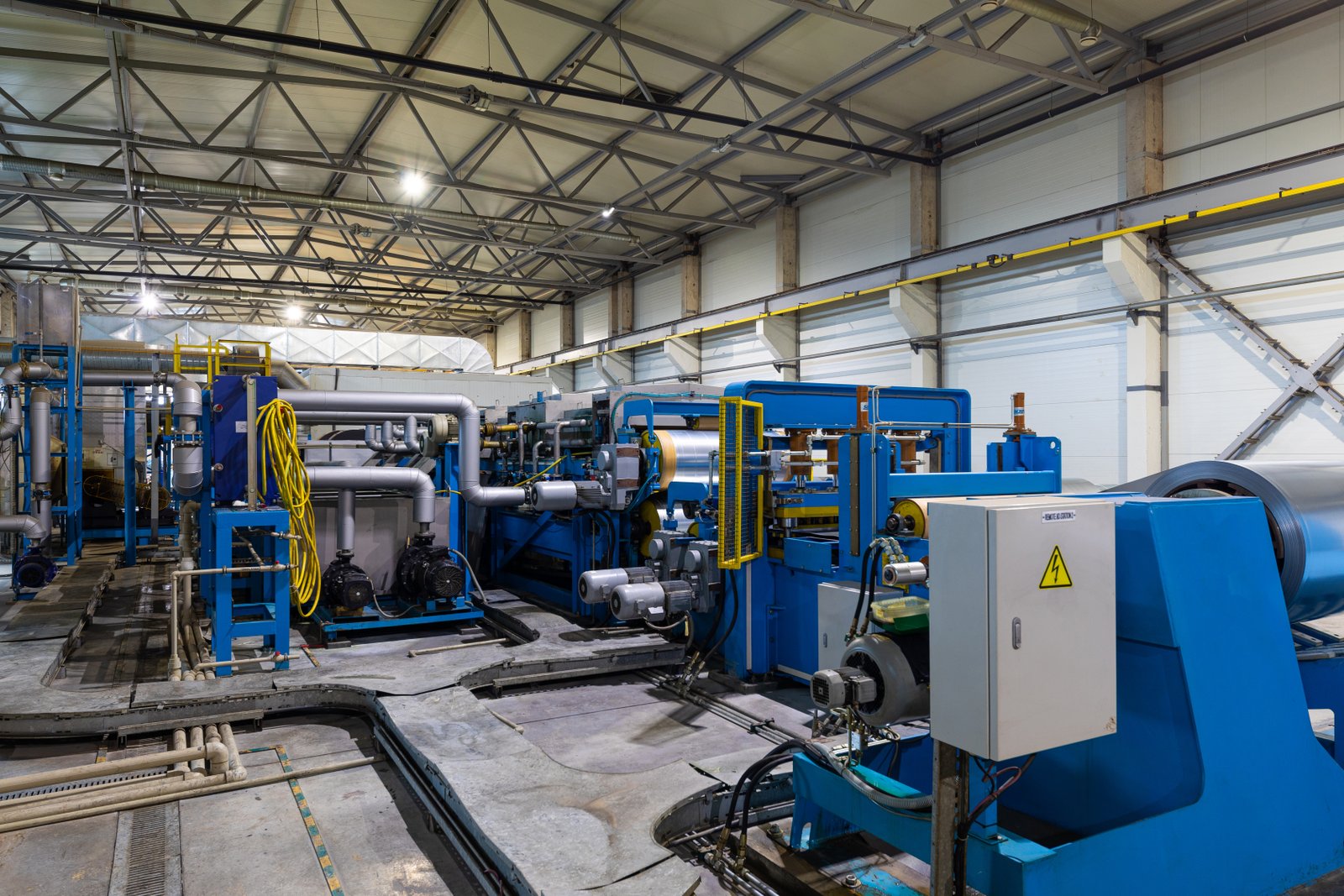
In the world of industrial heat treatment, time is a currency measured in both energy and metallurgical integrity. The soaking period during bright annealing2 is a delicate balancing act. It is a common mistake to either rush the process, resulting in incomplete transformation, or to over-soak the material out of an abundance of caution, triggering a host of negative consequences. The goal is to achieve full recrystallization throughout the material's cross-section without initiating significant grain growth. This requires a nuanced understanding of how time interacts with the material's thickness, composition, and the furnace's heating capacity. For our clients at AKS, we emphasize a data-driven approach, moving away from outdated "rules of thumb" towards precise, calculated process parameters that ensure efficiency and repeatability, batch after batch.
Calculating Soaking Time: Beyond Simple Rules of Thumb
A traditional guideline for determining soaking time has been to allow for one hour per inch (or about 2.5 cm) of material thickness. While this can be a starting point for very thick sections in batch furnaces, it is largely inadequate for the precision required in modern manufacturing, especially for continuous annealing of strip and wire. A more accurate calculation must consider the material's thermal conductivity and the specific grade of stainless steel. For example, austenitic stainless steels3 have lower thermal conductivity than ferritic grades, meaning heat takes longer to penetrate to the core.
In a continuous furnace, like our Mesh Belt Furnaces, time is not measured in minutes or hours but is a direct function of the heating chamber length and the belt or line speed. The formula is simple: Time (min) = Heating Zone Length (m) / Line Speed (m/min). The operator's primary control is the line speed. We work with clients to develop process sheets that specify the exact line speed required for different products. For a 1.0 mm thick 304 stainless steel strip in a 10-meter heating zone, the optimal speed might be 2.0 m/min, yielding a soaking time of 5 minutes. For a thinner 0.5 mm strip, the speed could be increased to 3.3 m/min for a 3-minute soak, significantly boosting throughput.
This calculation-based approach ensures that the material receives the exact amount of thermal energy required for full annealing without any waste. It transforms the process from a subjective art into a repeatable science. Furthermore, advanced furnace control systems can automatically adjust line speed based on inputs from sensors, creating a self-regulating process that adapts to minor variations, ensuring perfect annealing every time.
The Risk of Over-Soaking: Understanding Grain Growth
Once the material has fully recrystallized, any additional time spent at the soaking temperature begins to promote grain growth. During this process, larger, more energetically stable grains consume smaller ones, leading to an overall increase in the average grain size of the metal. While this might sound innocuous, the consequences for mechanical properties can be severe. A larger grain structure typically results in decreased tensile strength, lower fatigue resistance, and, most critically for many applications, a significant reduction in ductility and toughness.
Imagine a client producing stainless steel bellows for flexible pipe connectors. These components must withstand thousands of cycles of expansion and contraction. If the material is over-soaked, the resulting large grain structure would make it less ductile and prone to premature failure from low-cycle fatigue. I've seen cases where a 40% increase in soaking time led to a 25% decrease in the product's functional lifespan. This is a silent defect that isn't visible on the surface but can lead to catastrophic field failures and immense damage to a brand's reputation.
To avoid this, process validation is key. We advise clients to perform microstructural analysis on samples from their initial production runs. By examining the grain size under a microscope (e.g., comparing it against ASTM E112 standards), they can confirm that their time and temperature parameters are producing the desired fine-grained structure. This data-backed validation provides the confidence that the process is optimized not just for appearance, but for mechanical performance as well.
Optimizing Time for Throughput in Continuous Furnaces
The greatest advantage of continuous bright annealing furnaces is their ability to precisely control the time parameter to maximize throughput without compromising quality. Unlike batch furnaces where the entire cycle time is fixed, continuous furnaces allow for on-the-fly adjustments to line speed, directly influencing the soaking time and, therefore, the production rate. This capability is essential for medium- to large-scale manufacturers who process coils of varying thicknesses and grades.
Consider a stainless steel service center that processes coils for different clients. One day they might be running 0.4 mm thick 430 stainless for appliance trim, and the next day they could be processing 1.5 mm thick 316L for chemical tanks. A batch process would be incredibly inefficient, requiring long cooling and heating cycles between different loads. With an AKS continuous line, the operator simply loads the new coil and adjusts the line speed according to the pre-defined recipe. The transition is seamless, minimizing downtime and maximizing output.
This efficiency is further enhanced by the furnace's design. Our Bright Annealing Furnaces for strip feature a vertical, multi-pass layout (like a tower furnace) or a long horizontal layout to provide the necessary heating and cooling lengths while minimizing the factory footprint. By carefully designing the ratio of heating length to cooling length, we ensure that higher line speeds are matched with adequate cooling capacity, preventing bottlenecks and maintaining a smooth, continuous flow of perfectly annealed, bright stainless steel. This integration of time, temperature, and cooling control is the hallmark of a modern, efficient heat treatment operation.
[text-placehold]
Longer annealing time reduces material toughnessTrue
Excessive annealing time causes detrimental grain growth, which reduces the steel's toughness and formability.
One hour per inch is always accurateFalse
The traditional "one hour per inch" rule is inadequate for modern precision manufacturing and doesn't account for material grade or furnace type.
What is the significance of dew-point in the bright annealing of stainless steel?
Have you ever followed every rule—perfect temperature, precise timing—only to see your stainless steel emerge from the furnace with a dull, cloudy finish? This frustrating problem often points to an invisible culprit. The issue isn't your settings; it's the purity of your atmosphere.
The dew point is a direct measure of moisture content within the furnace's protective atmosphere. A low dew point (e.g., below -40°C) is critical because it signifies a dry environment that prevents water vapor from oxidizing the chromium and iron in the steel at high temperatures, ensuring a truly bright surface.
I often refer to dew point as the "silent killer" of a bright finish. Its significance cannot be overstated. I vividly remember a new client, a manufacturer of high-end kitchenware, who was on the verge of abandoning a new product line due to persistent discoloration issues. They were using a high-purity hydrogen atmosphere and couldn't understand the cause. We installed a high-precision dew point analyzer4 at the furnace inlet and immediately found the problem: their gas distribution system had microscopic leaks, allowing humid ambient air to contaminate the supposedly pure gas. Their dew point was hovering around -15°C, which is far too high. By tightening the fittings and implementing real-time monitoring, we helped them achieve a consistent dew point of -55°C. The discoloration vanished instantly, saving the product line and their investment. This experience is a stark reminder that you can't control what you don't measure, and in bright annealing, measuring dew point is non-negotiable for achieving a flawless, mirror-like surface.

Among all the parameters governing bright annealing, the dew point of the protective atmosphere is perhaps the most critical and least understood. While operators can easily set and monitor temperature and time, atmospheric purity is an invisible variable that has a direct and immediate impact on the final product's surface quality. A high dew point essentially means you are performing a "steam treatment" on the steel at 1100°C5, a guaranteed recipe for oxidation. Understanding the chemistry behind this phenomenon and implementing rigorous control measures is fundamental to the entire bright annealing concept. At AKS, we design our furnaces with this principle at their core, ensuring gas-tight integrity and providing the tools for our clients to monitor and maintain the pristine atmosphere required for a perfect finish.
The Chemistry of Oxidation: Why a Low Dew Point is Non-Negotiable
To appreciate the importance of dew point, we must look at the chemistry at play. Stainless steel's "stain-less" property is due to a passive layer of chromium oxide (Cr₂O₃) that forms on its surface in normal atmospheric conditions. However, at the extreme temperatures of annealing, the metals are highly reactive. The protective atmosphere's job is to prevent any oxidizing agents from reaching the steel's surface. The primary oxidizing agents in this context are oxygen (O₂) and water vapor (H₂O).
While a pure gas supply might have very low oxygen levels, moisture can be a far more insidious contaminant. At temperatures above 600°C, water vapor becomes a potent oxidizer for stainless steel. The H₂O molecules react with the iron (Fe) and chromium (Cr) in the steel, forming iron oxides (like FeO) and chromium oxides (Cr₂O₃). These oxides create the dull, gray, or blue-ish film that ruins the bright finish. A dissociated ammonia or hydrogen atmosphere is a reducing environment, meaning it will react with and remove free oxygen. However, it is the ratio of the partial pressure of water vapor to that of hydrogen (P H₂O / P H₂) that determines whether the steel will be oxidized or reduced. To keep chromium from oxidizing, this ratio must be kept extremely low, which directly translates to needing a very low dew point.
For most austenitic and ferritic stainless steels, a dew point of -40°C or lower is considered the minimum requirement for achieving a bright finish. For high-chromium grades or applications demanding a truly mirror-like surface, a dew point of -60°C or even lower is often specified. This underscores that simply using a "protective" gas is not enough; the gas must be verifiably dry.
Measuring and Controlling Dew Point in an Industrial Setting
Effective control of the dew point begins with accurate measurement. Modern industrial operations rely on electronic dew point analyzers or hygrometers. These instruments provide real-time data on the moisture content of the gas, typically expressed as a dew point temperature in degrees Celsius or Fahrenheit. For a bright annealing line, it is best practice to install sensors at two key locations: one at the main gas supply or generator to verify its quality, and another at the furnace inlet or even inside the furnace muffle to confirm the purity of the atmosphere as the steel experiences it.
Controlling the dew point involves a systematic approach to eliminating moisture sources. The most common culprits include:
- Impure Gas Supply: The purchased hydrogen, nitrogen, or ammonia may not meet the required purity specifications. It's crucial to source gas from reputable suppliers and verify its quality.
- Leaks in the System: As in my client's case, even minor leaks in pipes, valves, and fittings can allow ambient air to be drawn into the gas stream, dramatically increasing the dew point. Regular leak detection using solutions like Snoop or electronic gas detectors is vital.
- Contamination from the Workpiece: The stainless steel strip or parts themselves can carry moisture into the furnace if not properly dried after a washing or cleaning stage. An inline drying section before the furnace entrance can mitigate this risk.
Our AKS furnaces are engineered for atmospheric integrity. We use fully welded muffles, high-quality seals on all access points, and robust gas delivery systems to minimize the risk of contamination. This design ensures that the high-purity gas you feed into the furnace remains pure inside, where it matters most.
Practical Dew Point Targets for Different Stainless Steel Grades
The required dew point is not a one-size-fits-all parameter; it depends on the reactivity of the specific stainless steel grade being annealed. The higher the chromium content, the more easily it will oxidize, and therefore, the lower the dew point required to protect it. Other alloying elements can also influence this sensitivity. This makes it crucial to tailor the atmospheric conditions to the material.
Below is a table providing general guidelines for dew point targets for common stainless steel families. These values represent the maximum acceptable dew point to achieve a consistently bright, oxide-free surface. Operations aiming for premium, highly reflective finishes will often target dew points 10-15°C lower than these recommendations.
| Stainless Steel Family | Common Grades | Key Alloying Element | Recommended Max. Dew Point (°C) | Rationale |
|---|---|---|---|---|
| Austenitic | 304, 316, 321 | Nickel (Ni), Chromium (Cr) | -40°C | Standard requirement. Prone to oxidation but less sensitive than high-Cr ferritics. |
| Ferritic | 430, 434, 444 | Chromium (Cr) | -50°C to -60°C | Higher chromium content increases reactivity, requiring a drier atmosphere. |
| Martensitic | 410, 420 | Carbon (C), Chromium (Cr) | -45°C | Carbon content adds another layer of complexity; a dry atmosphere is critical. |
| High-Value Aesthetics | All Grades | N/A | < -60°C | For mirror-finish or decorative applications where any slight haze is unacceptable. |
By understanding and adhering to these specific targets, manufacturers can move from reactive problem-solving to proactive quality control, ensuring that every part that exits the furnace meets the highest standards for both appearance and performance.
Dew point measures moisture contentTrue
The dew point is a direct indicator of the amount of water vapor present in the furnace atmosphere, which is critical for preventing oxidation during bright annealing.
High dew point prevents oxidationFalse
A high dew point actually promotes oxidation by introducing more water vapor, which reacts with chromium and iron at high temperatures, leading to discoloration.
Why is cooling rate important in achieving optimal bright annealing results for stainless steel?
Your stainless steel parts emerge from the furnace with a perfect, bright finish, yet they fail prematurely in the field. This baffling contradiction often has its roots in the final, and most critical, stage of annealing: the cooling cycle. The speed of cooling is what locks in metallurgical integrity.
The cooling rate is vital for preserving both the corrosion resistance and mechanical properties of austenitic stainless steel. For austenitic grades, rapid cooling is mandatory to prevent sensitization—the formation of chromium carbides that depletes corrosion resistance and leads to intergranular cracking.
The consequences of an improper cooling rate can be catastrophic, creating hidden defects that compromise the product's safety and lifespan. I once consulted for a company, "Marine Fittings Inc.," that manufactured stainless steel components for yachts. Their parts looked flawless, but they were receiving warranty claims for severe corrosion after only a few months in a saltwater environment. The parts were made from 316L steel, which should have been highly resistant. Our investigation revealed their batch annealing process allowed the parts to cool too slowly. This caused sensitization, creating microscopic pathways for corrosion to attack the material from within. By helping them switch to a continuous furnace with an integrated rapid cooling zone, we eliminated the problem. Their story is a crucial lesson: the cooling rate isn't just about finishing the job; it's about safeguarding the very properties that make stainless steel "stainless." It ensures the material is not just bright on the surface, but also strong and durable to its core.
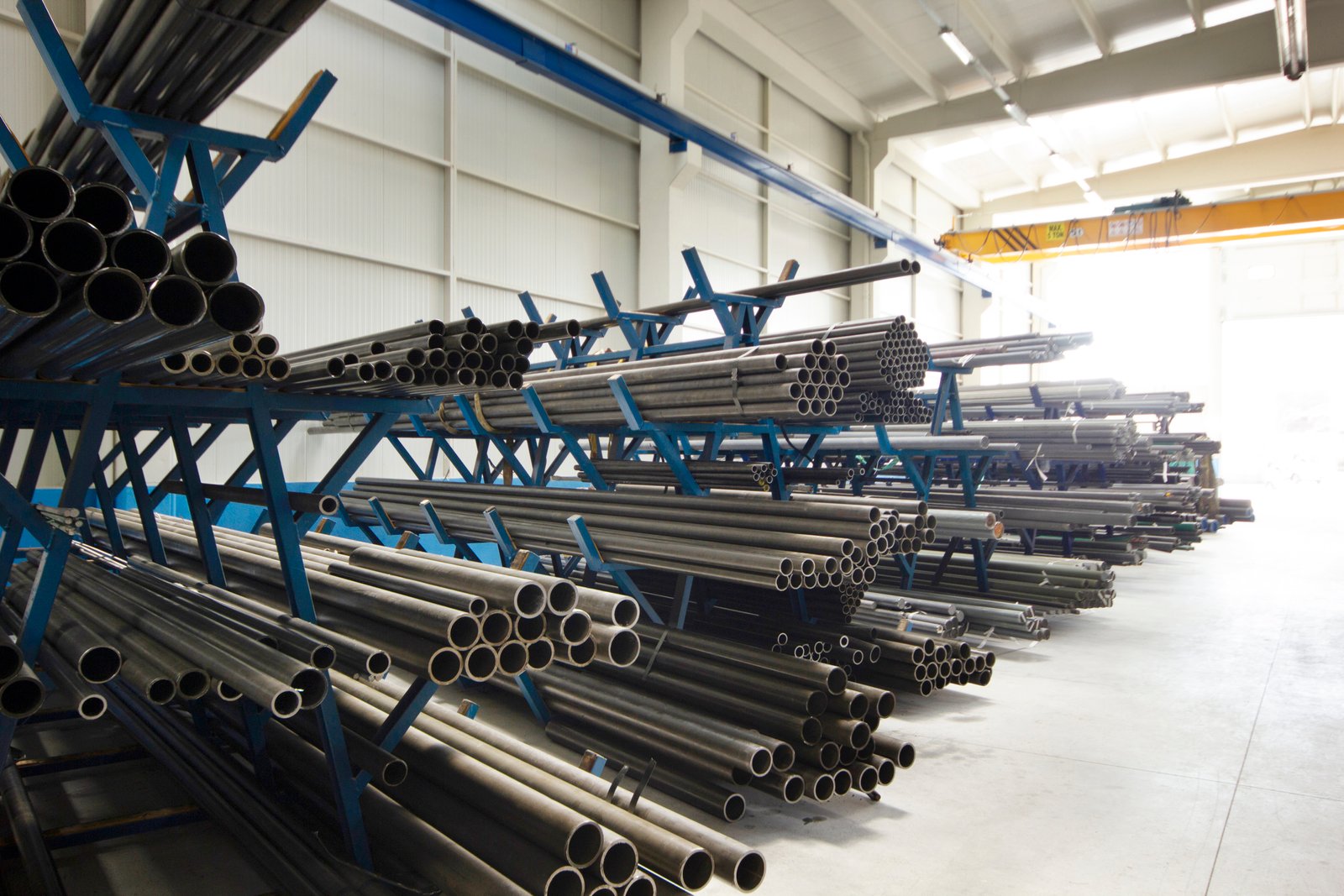
The cooling phase of the bright annealing cycle is far more than a simple return to room temperature; it is a controlled metallurgical transformation that dictates the final performance characteristics of the steel. While the heating and soaking stages create the desired softened state and bright surface, it is the cooling rate that preserves them. An uncontrolled or poorly designed cooling process can undo all the previous work, resulting in a product that is visually appealing but functionally compromised. This is particularly true for austenitic stainless steels, where the "race against time" to prevent carbide precipitation is paramount. At AKS6, we engineer our advanced cooling systems with the same level of precision as our heating chambers, recognizing that this final step is what ultimately guarantees the material's long-term durability and corrosion resistance.
The Danger of Sensitization in Austenitic Stainless Steels
The most significant challenge addressed by controlled cooling is the prevention of sensitization in austenitic grades like 304 and 316. This phenomenon occurs when the steel is held within or cooled too slowly through a critical temperature range of approximately 425°C to 815°C (800°F to 1500°F). Within this range, the carbon present in the steel has a strong affinity for chromium and migrates to the grain boundaries, where it combines with chromium to form chromium carbide (Cr₂₃C₆) precipitates.
This precipitation is detrimental because it draws chromium from the regions adjacent to the grain boundaries. This leaves these areas with a chromium content below the ~12% threshold required for passivity, making them highly susceptible to intergranular corrosion. The material becomes "sensitized," meaning it can be aggressively attacked along these depleted grain boundaries when exposed to a corrosive environment. The result is a loss of mechanical strength and integrity, which can lead to sudden and unexpected failures.
To prevent sensitization, the steel must be cooled through this critical temperature range so rapidly that the carbon atoms do not have sufficient time to migrate and combine with chromium. This is why a furnace's cooling efficiency is not a luxury but a necessity for processing austenitic stainless steels. A process that fails to achieve this rapid cool is producing a fundamentally flawed material, regardless of how bright it looks.
Designing for Controlled Cooling: Furnace Technology in Action
Modern bright annealing furnaces employ sophisticated cooling technologies to achieve the required rapid cooling rates. The goal is to extract heat quickly and, just as importantly, uniformly across the entire product to prevent thermal stress and warping. The AKS Advanced Cooling System is a prime example of this technology. It is typically a separate, water-jacketed section of the furnace muffle located immediately after the heating zone.
Inside this cooling chamber, several mechanisms work in concert. A high-volume fan or turbine rapidly circulates the inert protective atmosphere (hydrogen or nitrogen) in a closed loop. This gas is blasted onto the hot steel strip or parts through precisely angled nozzles and then directed past cold, water-filled chamber walls or heat exchangers. The gas transfers the heat from the steel to the water, and the now-chilled gas is recirculated to continue the process. The speed of the circulation fan and the flow rate of the cooling water can be precisely controlled, allowing operators to fine-tune the cooling rate to match the material's thickness and grade.
For a thin gauge 304 stainless steel strip, this system can drop the temperature from 1050°C to below 400°C in under 30 seconds, completely bypassing the sensitization window. This level of control not only ensures metallurgical quality but also increases the overall line speed and throughput of the furnace.
Cooling Considerations for Other Steel Types
While preventing sensitization in austenitic grades is the most cited reason for rapid cooling, the cooling rate is also a critical parameter for other types of stainless steel. The desired outcome, however, can be quite different.
For ferritic stainless steels (like the 400 series), which are not susceptible to sensitization in the same way, a very rapid quench can sometimes lead to brittleness. Therefore, a more moderate but still controlled cooling rate is often preferred. The goal is to cool quickly enough to maintain the bright surface but slowly enough to avoid introducing internal stresses that could impact formability.
For martensitic stainless steels (e.g., 410, 420), the cooling rate is a fundamental part of the hardening process. These grades are designed to be austenitized and then quenched rapidly to transform the microstructure into hard martensite. While a bright annealing process is less common for these grades (as they are typically hardened and tempered), if a bright finish is required post-machining, the cooling cycle in the annealing furnace must be carefully controlled to achieve the specific hardness and microstructure needed for the subsequent tempering stage.
This demonstrates that a "one-size-fits-all" cooling approach is inadequate. A truly versatile and high-performance annealing furnace must provide operators with the flexibility to program and execute a wide range of controlled cooling profiles to meet the unique metallurgical requirements of every grade of steel they process.
Rapid cooling prevents sensitizationTrue
Fast cooling through 425-815°C prevents chromium carbide formation that causes corrosion.
All steels need rapid coolingFalse
Ferritic steels require moderate cooling, while martensitic steels need quenching for hardening.
What recommendations can ensure the best practices in bright annealing stainless steel?
You now understand the core parameters, but how do you integrate them into a reliable, day-to-day operation? Knowledge without consistent execution can still lead to variability and defects. Adopting a systematic set of best practices is the bridge from theory to flawless production.
Best practices for bright annealing include meticulous pre-cleaning of materials, rigorous control of atmosphere purity with a verified low dew point, data-driven optimization of temperature and time for each specific grade, and employing a rapid, controlled cooling cycle to preserve metallurgical properties.
Implementing these best practices is what transforms a good operation into a great one. It’s the final step in achieving total process control. I've seen the full impact of this with my client, "Auto-Grade Metals." After we helped them dial in their parameters and understand the science, we worked with them to establish a comprehensive quality assurance protocol based on these best practices. They developed a "process recipe book" for every part, implemented a strict pre-cleaning regimen, and made real-time dew point monitoring a mandatory checkpoint. The results were transformative. Their rejection rate, once as high as 15%, plummeted to less than 1%. Their energy savings from optimized cycle times were substantial, and they gained a reputation for delivering a premium, highly consistent product. Their journey proves that mastering bright annealing is not about a single secret but about the disciplined application of a holistic set of best practices that guarantee quality from start to finish.
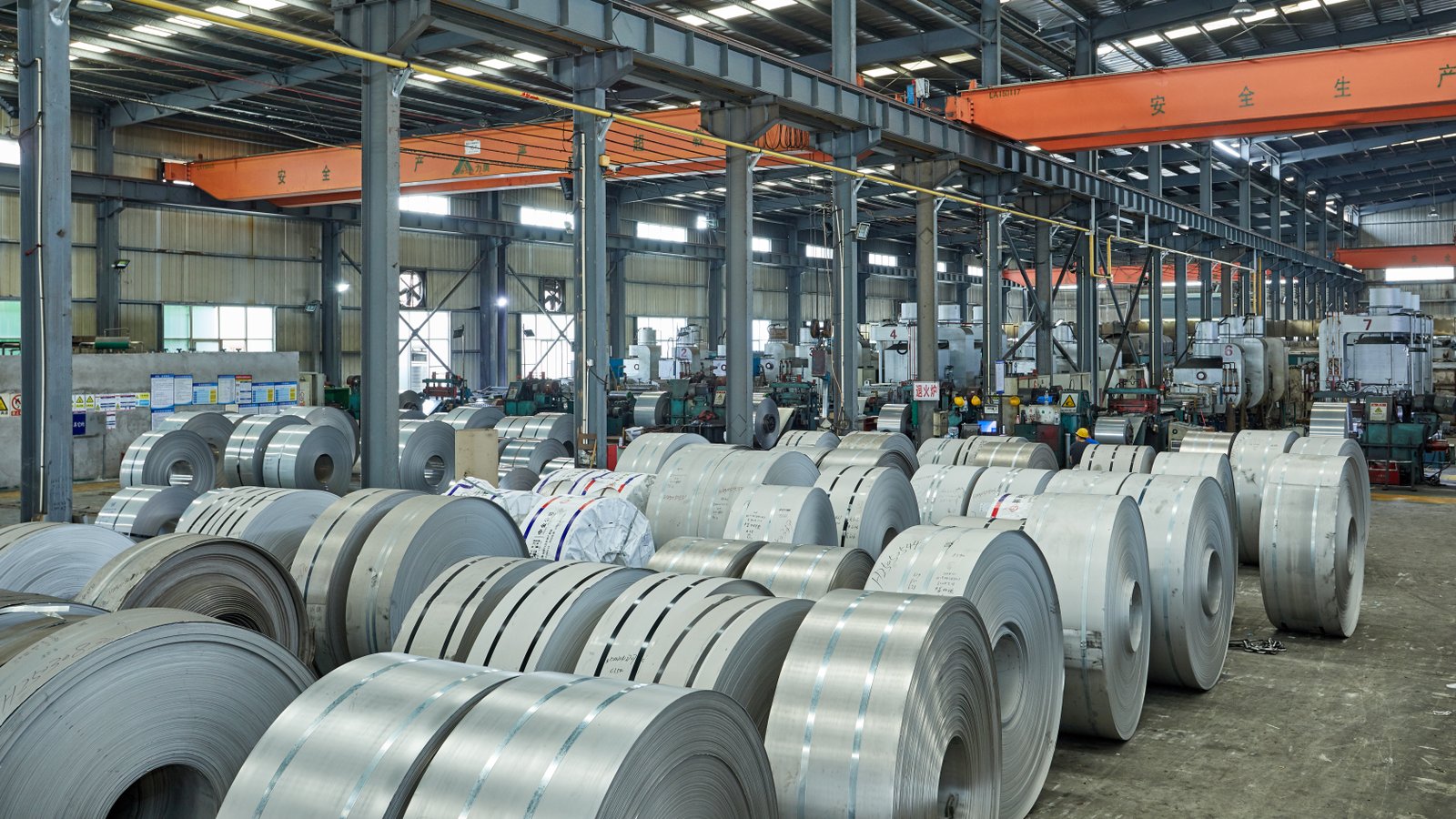
Moving beyond the individual parameters, establishing a robust framework of best practices ensures that high-quality results are not a matter of chance7, but a guaranteed outcome of a controlled and repeatable process. This operational discipline is what underpins long-term success and profitability in the competitive world of metal processing. It involves looking at the entire process chain, from the moment raw material enters the facility to the final quality inspection. It requires a commitment to cleanliness, diligent monitoring, and continuous improvement. At AKS, our role often extends beyond simply supplying a furnace; we partner with our clients to help them build these very systems and workflows, ensuring they can leverage our technology to its fullest potential and achieve a true return on their investment through superior product quality and operational efficiency.
Pre-Treatment: The Unyielding Importance of a Clean Surface
The most advanced furnace in the world cannot produce a bright finish on a dirty part. This is the first and most fundamental best practice: the surface of the stainless steel must be meticulously clean before it enters the furnace. Any residual contaminants—such as rolling oils, drawing lubricants, dirt, fingerprints, or cleaning residues—will have a disastrous effect at annealing temperatures.
Under the intense heat, these substances will carbonize, decompose, or react with the steel's surface, causing permanent stains, discoloration, or carburization that cannot be removed by the annealing process. The result is a splotchy, dull, or blackened surface, completely defeating the purpose of bright annealing. Therefore, a robust and validated pre-cleaning process is non-negotiable.
Effective pre-treatment can involve multiple stages depending on the type and level of contamination. Common methods include alkaline washing to remove oils, followed by a thorough water rinse and, critically, a drying stage. For more stubborn contaminants, solvent-based vapor degreasing or ultrasonic cleaning may be necessary. The final rinse should ideally use deionized water to prevent mineral deposits. The goal is a surgically clean, dry surface entering the furnace, providing the perfect canvas for the bright annealing process to work its magic.
Process Monitoring and Automation: The Core of Modern Control
The days of manual adjustments and subjective assessments are over. Modern bright annealing relies on a suite of integrated sensors and automated controls to maintain the precise conditions required for success. This is not just about convenience; it's about ensuring unwavering consistency and providing a detailed data trail for quality assurance and process optimization.
A state-of-the-art furnace, like those we build at AKS, should be equipped with a centralized PLC system that continuously monitors and logs all critical parameters. This includes multi-zone thermocouples for temperature, dew point analyzers for atmospheric purity, flow meters for gas consumption, and oxygen sensors as a backup check on atmospheric integrity. The control system uses this real-time feedback to make automatic adjustments, keeping every variable within its specified tolerance. For example, if the dew point begins to rise, the system can trigger an alarm or even increase the flow of fresh, dry gas to compensate.
This level of automation removes human error and variability between different shifts or operators. Furthermore, the data logging capability is invaluable. If a quality issue does arise, engineers can review the historical process data for the specific batch and quickly pinpoint the deviation that caused the problem. This turns troubleshooting from a guessing game into a data-driven analysis.
Developing and Maintaining a Process Recipe Book
To ensure consistency across a wide range of products, it is a crucial best practice to create and maintain a detailed "Process Recipe Book." This is a formal document, either physical or digital, that contains the specific, validated furnace settings for every unique part or material that is processed. Relying on memory or informal notes is a recipe for inconsistency.
Each entry in the recipe book should be a comprehensive guide for the operator. It should specify all the information needed to run the part successfully every time. This data-driven approach institutionalizes process knowledge, making the operation less dependent on any single experienced individual and ensuring that best practices are followed consistently by everyone.
A well-structured recipe entry would look something like the table below, providing a clear and unambiguous set of instructions.
| Parameter | Specification | Notes |
|---|---|---|
| Product ID | Part # SS-304-TUBE-1.2 | Automotive Exhaust Component |
| Material Grade | Stainless Steel 304 | |
| Material Thickness | 1.2 mm | |
| Pre-Treatment | Ultrasonic Clean -> DI Water Rinse -> Forced Air Dry | No visible residue allowed. |
| Furnace Temperature | 1060°C (Zone 1-3) | Uniformity required: ±5°C |
| Line Speed | 1.8 meters/minute | Corresponds to 6.5 min soaking time. |
| Protective Atmosphere | 75% H₂ / 25% N₂ (Dissociated Ammonia) | |
| Gas Flow Rate | 25 m³/hour | |
| Max. Dew Point | -45°C | Monitor at furnace inlet. Alarm at -40°C. |
| Cooling Profile | Rapid Cool - Fan Speed 90%, Water Flow 100% | |
| Inspection | Bright, mirror-like finish. No discoloration. |
By building a library of these recipes, a manufacturer can guarantee that whether they are producing a part for the first time in a year or the tenth time in a day, the result will be identical.
Pre-cleaning is essential for bright annealingTrue
Any contaminants on the stainless steel surface will carbonize or react during annealing, leading to discoloration or stains.
Manual adjustments ensure better controlFalse
Modern bright annealing relies on automated sensors and controls to maintain precision and consistency, reducing human error.
Conclusion
Mastering bright annealing is a science of synergy. It requires precise, integrated control over temperature, time, atmosphere, and cooling. By implementing these best practices, you can transform your process, ensuring every stainless steel product has a flawless bright finish and superior metallurgical integrity.
-
Explore modern furnace designs to achieve superior bright annealing results ↩ ↩
-
Understand the specifics of bright annealing in stainless steel production. ↩
-
Discover how thermal properties affect stainless steel annealing processes. ↩
-
Learn about the tools used to measure and control dew point for optimal stainless steel finishing ↩
-
Understand how temperature affects oxidation during the annealing process ↩
-
Learn about AKS's cooling technology and its benefits for stainless steel processing. ↩
-
Understand the framework of best practices in bright annealing for guaranteed product quality ↩
